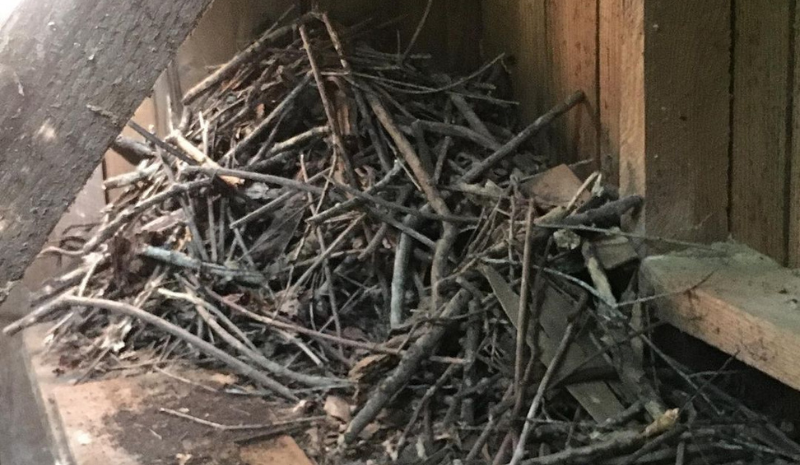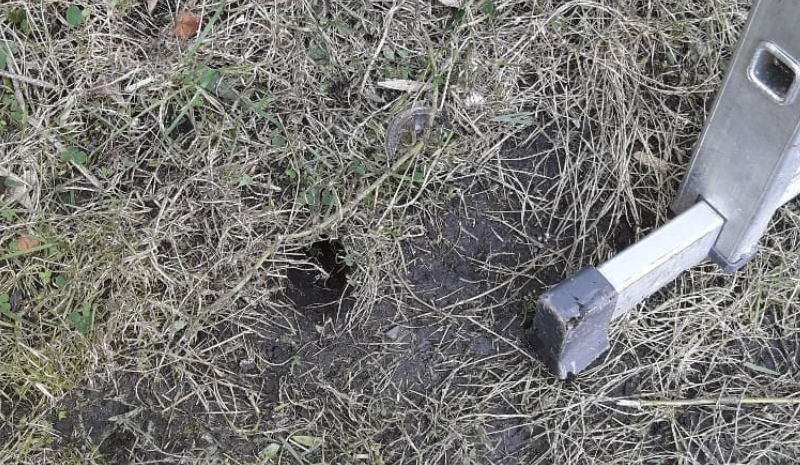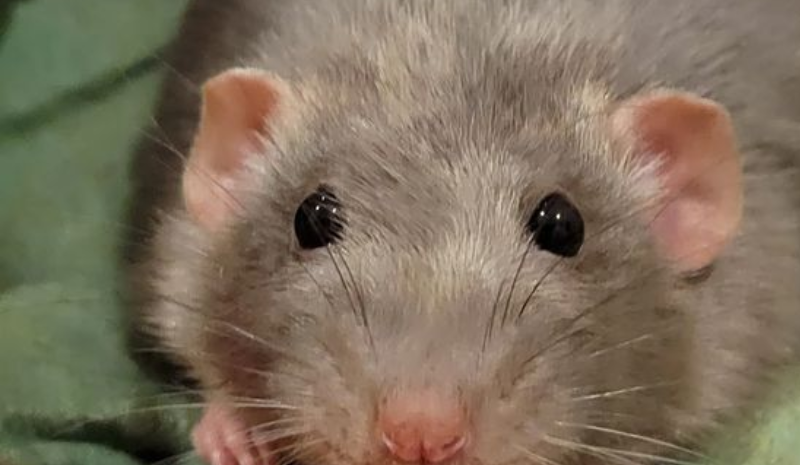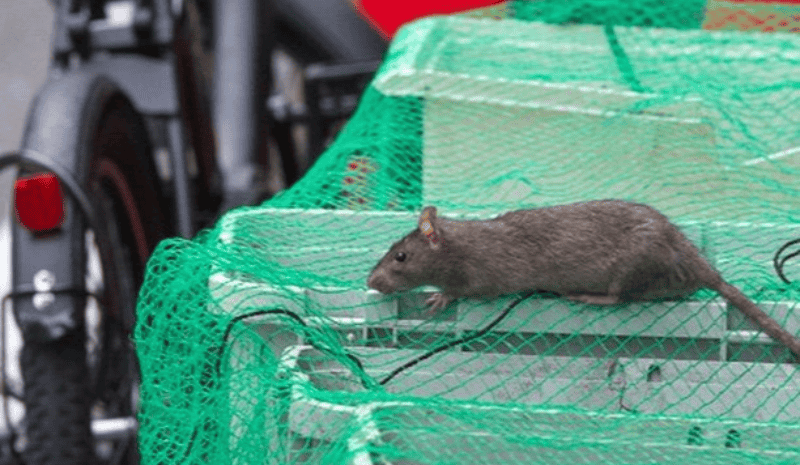Rats typically invade private and corporate properties. However, their presence in gardens is also common. If your garden is warm and cozy enough — and if there are lots of yummies there — chances are these long-tailed violators have already dug up a few holes there. In this piece, I’ll let you in on rat holes, their characteristic features, and appearance, as well as what to do with them when you find them next to your house. Because these critters are known for their shrewdness and top-level survival potential, you’ll need deeper knowledge to figure out how to get rid of rat holes in your yard.
In brief, it’s not too hard. Here’s what you’ll need to do:
- Flash out the holes with water.
- Utilize non-toxic repellents.
- Seal the holes like a pro (see below for details).
- Say bye-bye to the long-tailed occupants.
Rat Nests Explained
Do rats dig tunnels? Absolutely! Rat nests, also referred to as holes or burrows, are underground rodent homes with lots of pathways these cunning creatures dig in order to store their yummies and keep themselves under the human radar. Some rodent homes have several entries and exits. This ‘construction specificity’ makes it easier for rodent diggers to get away from your prying eyes. When your uninvited critter guests decide to ‘date, mate, and multiply’, the burrow expands with more interlinked tunnels and ‘rooms’.
So, do rats live underground? Basically, yes. But that is largely dependent on the species, too. Norway rats are heavy diggers, while brown rats are more fond of occupying your cozy house or basement. There are so many yummies in your kitchen for them!

What Does a Rat Nest Look Like?
This may surprise you, but rats are relentless chewers and have agile paws, which adds up to their impeccable digging possibilities. Capable of munching through wood, plastic, and even metal, these smart critters make holes in the most unbelievable of places. Noticing smallish two- or three-inch holes in the ground in your garden? That may be an early indication of rodent occupation of a large section of your private property.
So, what do rat holes look like? They’re small, you already know that. But they’re bigger than those of the insects. They have smooth walls and are about 20 inches deep. Outside the hole, you’ll probably notice some loose dirt. That’s because these long-tailed diggers tend to kick out all of the soil when rummaging through it.
Wondering about other signs of rodent holes in your yard? They are regular droppings, grease marks, unpleasant pungent smell, and paw prints. Also, if you’re noticing spoiled vegetables or wires near your house, chances are you’ll find rodent ‘apartments’ there too — if you try and look for them.
Because rodents are most active during nighttime, you can see them jumping in and out of their burrows mostly at night. So, if you’re seriously up for identifying whether the hole you’ve found in your garden belongs to those furry poopers or not, you’re going to have to spend a few sleepless nights watching the critters hanging around their newly dug sweet home.

Getting Rid of Rat Holes Step by Step
Keeping these long-tailed critters at bay is always a better option than just slaying them all in a cruel and inhumane way. Follow these fairly easy steps to do away with those burrows without wasting too much of your precious time:
- Flush ‘em out. Rats love comfort. If you arm yourself with your garden hose and try to free the hole using a fast-moving stream of water, the critters will most likely get totally shocked and escape their home forever.
- Use non-toxic repellents. Because poisonous substances may do a lot of harm to your pets or kids, it’s best to opt for such chemical-free solutions as white vinegar, garlic, mint, lavender, herbs, or powdered pepper. Rats hate the smell of these deterrents and will most likely abandon their nests once you use them properly.
- Seal the holes. This will disrupt the little invader’s routine. They hate change, so they’ll most likely hate your place, too, and choose to leave your property as a protest.
[su_youtube url=”https://www.youtube.com/watch?v=FJ5aoSNS2ow”]
How to Block off a Rat Hole
Start with rat hole identification. Did you notice rat paw prints, runways, and droppings around? Maybe you’ve seen rats themselves jumping in and out of their burrows in your yard? It’s time to switch to the next step of the block-a-hole operation.
Upon identifying rat ‘apartments’ in your yard, the fastest and most time-saving solution would be to call your local pest control company. Based on how severe your infestation is, professional rodent control technicians will effectively assist you in creating a plan of elimination. You’ll most likely choose between baits or traps to exterminate the nasty rodents.
Once the long-tailed diggers are gone, you are free to seal the holes. Closing a mouse hole when the ‘residents’ are gone is vital, for it will prevent other critters from making themselves at home in those burrows. Nature abhors a vacuum, they say.
To succeed in sealing the burrows, fill them up with soil, sand, or concrete. Alternatively, use hardware mesh, chicken wire, or steel wool for this purpose. If your long-gone rodent invaders’ relatives decide to deblock the nests, they won’t be able to chew through this stuff. Avoid killing rats in their burrows and always ensure they are gone before sealing it all with concrete. Because if you block the critters inside, you’ll have to endure a truly unbearable odor in the long run.
Rat Burrow Prevention Tips
Naturally, these rodents will refuse to leave your garden if there’s plenty of their favorite yummies there. Therefore, you’re going to need to make certain changes in order to keep the nasty occupants away:
- ensure there’s no food or water left for rats where you reside;
- pick your crops on a regular basis;
- mow your lawn, trim your bushes, remove piles of wood and anything that will attract rats’ attention: remember that these little critters can’t stand open spaces;
- enhance your home drainage system to prevent standing water;
- use fencing to protect what you’ve grown.
Rodent ‘apartments’ in your yard are definitely a bad sign. Prior to working on rodent elimination, you’ll need to ensure that the holes you’re noticing are in fact rat holes. Now that you’ve explored the main identifiers, I’m sure you’ll succeed in this respect.

FAQ
In this section of my today’s post, you’ll find my answers to your most frequently asked questions. Ask me anything in the comments at the bottom of this post whenever you feel like doing it. I’ll get back to you with my expert opinion as soon as possible.
Can Rats Go Back to the Holes or Burrows?
If you don’t seal the holes properly or fail to work on prevention methods (see above), then yes, they can come back to your yard and start the invasion of your property all over again. Would you really like that to happen? No? Then act accordingly.
Should I Block Up a Rat Hole?
Yes, definitely. But first and foremost, ensure that it’s not occupied. By blocking the rat hole entrances, you change the rodents’ daily habits (something your furry garden occupants really hate) and make them want to leave your property for good.
How to Prevent Rats from Appearing in the Yard?
Make your yard or garden as rat-proof as possible. Make it totally unappealing food-, shelter-, and comfort-wise for the long-tailed poopers. Tidy it all up, sanitize, pick up the veggies regularly, protect the plants, use non-toxic repellents, and improve your drainage.
Bottom Line: Know Your Home Invader
In summary, knowing your rodent invader inside out is sure to aid you in effectively eliminating its signs on your property. Bear in mind that humane and non-toxic pest management strategies require time and regularity to bring excellent results. With that said, transform working on making your garden rat-proof into a daily habit if you want to succeed in this endeavor. To achieve the best result, get in touch with a licensed rodent control specialist to help you solve the issue in the most hassle-free way possible.
Have anything to add on the topic? You’re welcome to add comments to the post below. I value your opinion greatly. Don’t forget to add my blog to your favorites for more updates on the topic.
Also read:
[su_posts template=”templates/list-loop.php” posts_per_page=”5″ offset=”17″ order=”desc”]

